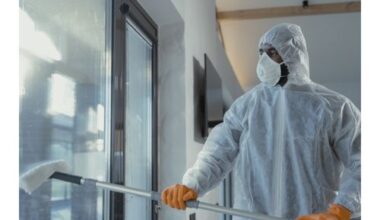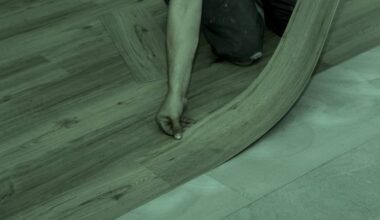Homeowners who have been through a severe hailstorm understand the damage hail can cause; even small hail pellets, when combined with strong winds, can cause significant roof damage. Because most hail damage is difficult to detect, it often goes unnoticed until shingles and other roof components deteriorate over time, resulting in major roofing problems. We’ll discuss how to detect hail damage, how to repair your home against hail damage, service, cost, insurance claim, and hail-damaged roof scams in this article.
How to Identify and Repair Hail Damage Roof
Your roof may be more vulnerable to hail damage if you live in a storm-prone area. Hailstones can crack shingles, causing water damage to a home. Extremely large hailstones can cause havoc, even though some materials are more resistant to hail than others—for example, normal-sized hail will not dent a metal roof.
In addition to monitoring daily hail reports, homeowners can reduce the severity of the damage by promptly assessing and repairing hail damage. Here’s what to know about how to identify and repair roof damage from hail storms.
Before You Start
The length and cost of repairs will vary greatly depending on the severity of the damage. Roofers will also be unable to make repairs during inclement weather.
Tips for Identifying and Repairing Hail Damage to Roof
- Even small hail (34 inches) can cause roof damage depending on wind speeds, though it may not always be visible to the untrained eye. When hail is 1 inch or larger, it causes more severe shingle bruising and damage. Hail larger than 2 inches in diameter frequently causes severe damage, especially when combined with high wind speeds.
- While a few loose granules on a shingle may not seem like a big deal, they indicate that the shingle’s integrity has been compromised. Over time, a water leak can develop, causing more serious problems such as mold growth or structural damage.
Safety Considerations
- When working on a roof, use scaffolding or a platform to cross uneven surfaces safely. Wear sturdy shoes with soft soles or roofing boots.
- If you have no experience repairing roofs, hire a professional to inspect and repair them.
Step 1: Check for hail damage in the gutters and downspouts. Damage to siding and window frames may also be visible.
The roof is not the only area that may be damaged by hail; the surrounding areas may also be damaged. Gutter and downspouts on a roof that has been hit by a large hailstorm are likely to have dents from the impact. Siding, window frames, and any exposed metal surfaces (including outdoor air conditioner units) should all be inspected for minor dings. Decks and other painted surfaces may show signs of impact, such as chipped paint.
Step 2: Check for signs of damage, such as loose granules or cracks, if your roof is easily accessible.
Loose granules that may expose the roof felt, cracks in the roof, and random damage with no discernible color are some common signs of hail damage to roofs. Check any roof vents, chimneys, skylights, and other features for dents or chips, as well as the shingles. Using light-colored chalk on dark or difficult-to-see surfaces can help reveal damage that would otherwise go undetected.
Step 3: Hire a qualified roofer to assess the extent of the damage.
After conducting a preliminary inspection of your roof, the next step is to hire a professional roof inspector to determine the extent of the damage. The majority of professional inspections are free, and a roofer or general contractor should be able to quickly determine the severity of the damage and the necessary repairs.
Step 4: If your roof is made of shingles, determine whether individual shingles need to be replaced or an entire area needs to be repaired.
Homeowners who have shingled roofs can choose to replace individual shingles or repair an entire area. If only a few shingles are broken, they can be removed and replaced with new ones. If your roof is relatively new and does not need to be completely replaced, this can be an excellent solution; however, you must ensure that the new shingles closely match the old roof.
Step 5: Contact your insurance company to see if hail damage to your roof is covered.
Insurance companies will often cover significant weather damage repairs within six months to a year. Claims from naturally occurring incidents beyond a homeowner’s control (often referred to as “Acts of God”) cannot legally result in cancellation, non-renewal, or premium increases.
Step 6: File a claim and hire a professional roofer.
The final step is to file a claim and hire a professional after a professional roof inspection and determination that hail roof damage is covered by your insurance policy. The length of time it takes to finish repairs is determined by the severity of the damage. But most hail storm damage roof repair jobs can be completed in one to five days.
Hail Damage Roof Repair Cost
Estimating the cost to repair a roof after a hail is difficult because there are so many factors to consider, including the amount and extent of the damage. As a result, no single estimate will apply to all situations.
The average cost to repair a roof is $940, we can tell you that. This may include replacing visibly damaged shingles, repairing hidden problems, preventing leaks, and/or repairing other roofing elements such as gutters and flashing.
You may only need to repair one side of your roof because hailstorms are typically brief and come from a single direction. However, keep in mind that replacing only one side of a roof will cause it to age at a different rate, and you have a variety of warranty options.
You may need to replace your entire roof in severe storms where you sustain significant damage. This cost can range from $8,700 to $22,000, depending on the size and style of your roof.
We’ll concentrate on repair costs rather than roof replacement costs in this article. The typical repair costs for each roof type are as follows:
- Asphalt: $750
- Clay or Concrete Tile: $1,000
- Metal: $1,300
- Wood: $750
Hail Damage Roof Repair Insurance Claim
There are several steps involved in filing a hail damage roof repair insurance claim. Your homeowners’ insurance company will pay for a roof replacement to protect you from property losses outside of your control.
Ensure that all storm damage is documented before filing a claim. If you think you may have a hail damage roof repair insurance claim, follow these steps:
- Get in touch with a roofing company.
- Contact your insurance company
- Schedule the inspection
- Identify damages during the inspection
- Deliver paperwork to your roofing contractor
- Set a date for roof work
- Select your new materials and colors
- Get your roof fixed.
- Obtain a certified GAF warranty certificate.
When Can I File an Insurance Claim for Hail Damage Roof Repair?
You might not be able to see the damage from the ground depending on how severe the hail storm is. Examine your car and the rest of your property for anything out of the ordinary to see if you need assistance. If your car has indentations or your neighbor’s property has been damaged, you should have a professional inspection done.
After your roof is damaged by hail, file a roof repair insurance claim as soon as possible. The sooner they identify problem areas, the sooner they can order supplies based on your preferred color, texture, and style.
Will My Homeowners Insurance Rate Increase if I File a Claim?
No, filing an insurance claim after hail damage will not increase your rates. Homeowners insurance is not the same as car insurance. You won’t be penalized if you file a claim. Also, increases in homeowners insurance rates are determined by your location.
If you live in an area that has experienced significant storm damage, even if you do not file a claim, your insurance premiums may rise. Filing a claim for storm damage will not cost you anything, and you won’t have to worry about your insurance rate going up because the effects of a hail storm are not your fault.
Hail Damage Roof Repair Scams
It may be time for roof repair or replacement if your roof has reached the end of its useful life, is damaged, or was damaged by a storm in your area. There are some hail damage roof repair scams to be aware of, even though the majority of roofers are honest workers. You can ensure the success of your project and avoid the 12 most common hail damage roof repair scams by knowing what to look for and how to vet a local roofer.
#1. Storm chasers
Some roofing contractors chase storms, which means they follow severe weather and go to affected areas in the hopes of generating business. They are sometimes referred to as “storm chasers” because they approach homeowners and claim to have noticed roof damage or offer a free roof inspection. They may claim to be working on a different roof in your neighborhood. These storm chasers frequently take a down payment or perform subpar work before leaving town and finishing the job.
#2. Extremely low bid
Any contractor who gives you a project estimate that is significantly lower than other contractors is most likely a scam. Typically, a contractor who bids very low at the beginning raises the price as the project progresses.
Get at least three bids on your roofing project to compare prices, and talk with each roofer to find out what they plan to repair or replace. To avoid overpaying, have a contract in place that outlines any potential price changes as well as the terms for doing so.
#3. Mysterious or exaggerated damage
If a contractor exaggerates the damage or is unable to identify the source of the damage, your roof may not require the work they claim. Even during a free inspection, some roofers have been known to cause damage to the roof to charge a higher price.
#4. They request that the homeowner obtains the necessary permits.
A contractor should always be in charge of obtaining any necessary permits for the project. If a roofer requests that you pull the roofing permits, it could mean that they aren’t eligible for one or that they have outstayed their welcome at the permit office.
#5. Reduced materials
In some cases, a contractor may offer you a price break if you use “leftover” or discounted materials. These “special deals” rarely result in a long-lasting roof. Instead, obtain bids and project information from at least three different roofers, and spend time researching the materials they’ll use to repair your hail-damaged roof.
#6. There is no contract
Find a different contractor if a roofer wants to carry out your roofing repair without a contract. A contract protects you from price increases and no-show jobs. It is a contract that specifies the full scope of work as well as the payment terms.
#7. There is no insurance or a license.
Roofers are not required to have a license in all states, so it is crucial to research whether your state requires one. If this is the case, request proof of the license as well as proof of the contractor’s liability insurance. You should avoid hiring a contractor who does not have the necessary licenses or insurance.
#8. Time-sensitive or high-pressure sales
Any contractor, roofer or otherwise, who presses you to sign a letter of intent or contract should be treated with caution, though there are exceptions. Prices of materials can fluctuate or be available for a limited time (such as a few days), especially following a national economic shift. However, you should obtain additional estimates before entering into any type of binding agreement. Before you sign a contract, you should be confident in both your contractor and the price.
#9. Large down payment
A contractor who requests a large down payment may be trying to scam you. It could be a sign that they intend to steal your money and flee. Instead, look for a contractor who requires a reasonable down payment and specifies additional payment terms in a contract. A reasonable down payment is typically 15% or less of the total project cost.
#10. There is no online presence or feedback.
You should be able to easily find information about your roofing contractor online, such as customer reviews and the company’s location. Check to see if other homeowners have filed complaints against them with the Better Business Bureau.
#11. Insurance fraud
If a roofer asks you to sign over an insurance check or offers to pay your insurance deductible, they may be attempting insurance fraud. Even if a roofer says they’ll charge you less for the job, it’s not a good deal. They could accept the larger payment from the insurance company and pocket the difference, which is considered insurance fraud.
#12. Asks to be paid in cash
Be wary of any contractor who requests payment in cash or offers you a discount for doing so. These are red flags that they may take your money and leave town without doing any work or leaving a trace.
What is the best roof against hail damage?
One of the best roofs for hail is metal roofing. A hail-resistant roof must be durable and long-lasting.
What does hail damage look like on a roof?
The damage may appear to have misaligned your shingles or may have simply left a few marks. A close-up of hail damage on a roof surrounded by chalk.
What is hail damage repair?
The removal of hail dents or other types of damage from metal exterior surface panels without affecting the vehicle’s finish is known as paintless dent repair (PDR), and it is an industry-recognized repair technique.
What material can withstand hail?
Metal roofing materials and hail-resistant roof shingles are both recommended for areas prone to hail.
How do you cover hail?
Boxes made of cardboard. If you don’t have any blankets, a simple and inexpensive alternative is any common cardboard box you have. Flatten them to cover more area, either double-folded or single-folded, and use heavy items to keep the cardboard slats in place.
Can a concrete crack in hail?
Yes. If the concrete is old or cracked, the consequences can be far-reaching.
Related Articles
- How To Get Insurance To Pay For Roof Replacement
- HOW TO INSTALL METAL ROOF OVER SHINGLES: Step-by-Step Guide
- ROOFING TOOLS: 25+ Essential Equipment and Tools for Roofing
- ROOF WASHING: Guide To Roof Washing and Costs In 2023
- BUILDING CONTRACTOR: Job Description, Roles, and Salaries (Updated!)






